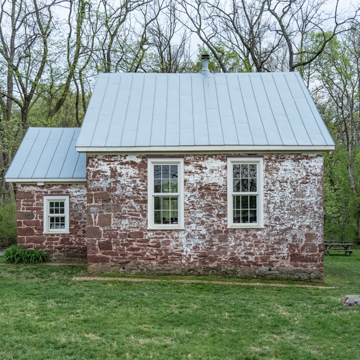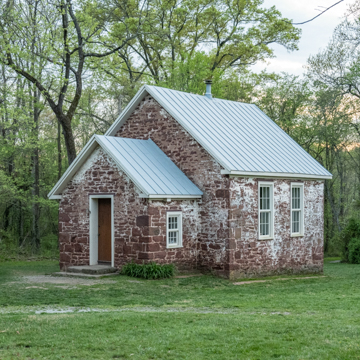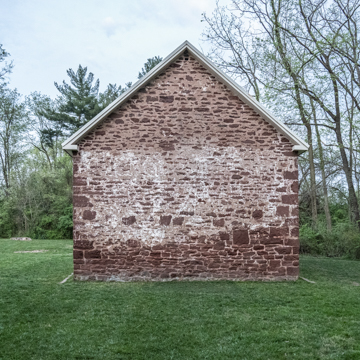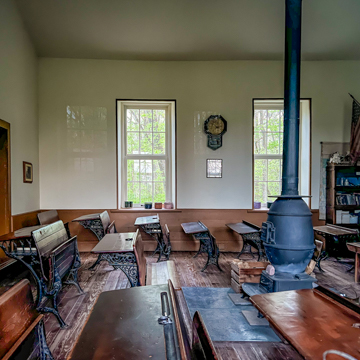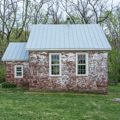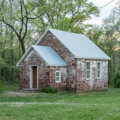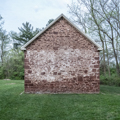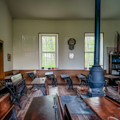Built of Seneca sandstone, this is among the earliest and one of only three extant one-room schoolhouses in Montgomery County, constructed following the establishment of a statewide public education system in 1860. It was built according to specifications developed by national public education advocate Horace Mann that appeared in his 1848 publication School Architecture, through plans provided by the state superintendent of public instruction. It is the only one of the eighty-three public schoolhouses in the county in 1880 to be built of stone. Although school operations were generally funded by the state, many rural schools were constructed though private donation. This one was erected by Seneca (grist) Mill owner Upton Darby. The gable-front main block and vestibule are built of rough-cut Seneca sandstone with quoining. The restored interior includes two-person desks, a long bench from which children recited their lessons, a teacher’s desk, blackboards, and a coal-burning stove for heat. It is available for tours, meetings, and events.
You are here
SENECA SCHOOLHOUSE
If SAH Archipedia has been useful to you, please consider supporting it.
SAH Archipedia tells the story of the United States through its buildings, landscapes, and cities. This freely available resource empowers the public with authoritative knowledge that deepens their understanding and appreciation of the built environment. But the Society of Architectural Historians, which created SAH Archipedia with University of Virginia Press, needs your support to maintain the high-caliber research, writing, photography, cartography, editing, design, and programming that make SAH Archipedia a trusted online resource available to all who value the history of place, heritage tourism, and learning.











